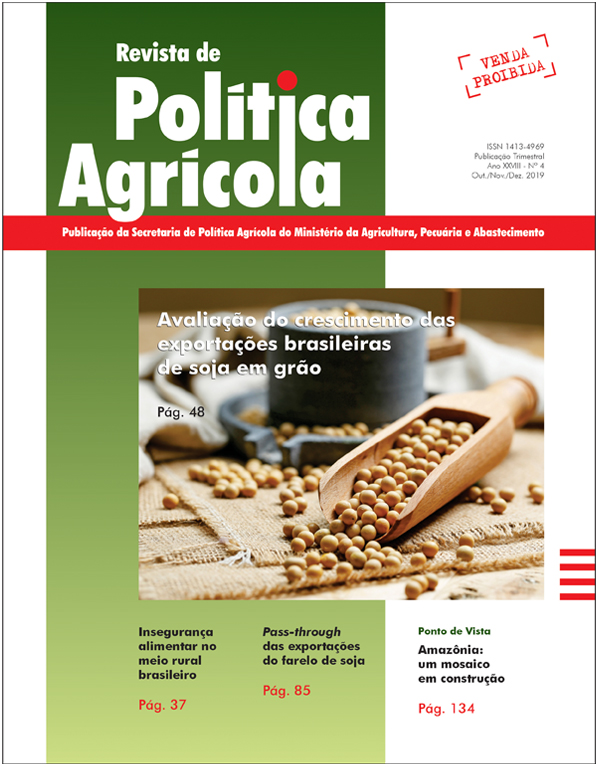Spatial distribution of sugarcane productivity in Brazil
Keywords:
Exploratory spatial data analysis, agricultural census, agricultural yield.Abstract
This article aimed to analyze the spatial distribution of sugarcane productivity in Brazilian mesoregions in 2006 and 2017, the period available in Agricultural Census. In order to reach the proposed objective, we used the Exploratory Spatial Data Analysis (ESDA) tools, which indicated the existence of spatial autocorrelation related to the quantity of sugarcane produced in these mesoregions. The significance maps of Local Indicators of Spatial Autocorrelation (LISA) and Clusters shows transformations in the analyzed periods indicating a shift in the spatial distribution of sugarcane from one census to another. Through the maps, it was possible to realize the formation of a new production area from the expansion of sugarcane to non-traditional regions within the Cerrado Biome, and a reduction of productivity in some mesoregions of the Center-South. This reduction in the performance, which mainly affected the states of Paraná, Mato Grosso do Sul, Goiás and São Paulo, is related to the conjunctural crisis that had affected the sector since 2008.Downloads
Published
2020-05-09
How to Cite
Vedana, R., Rodrigues, K. C. T. T., Parré, J. L., & Shikida, P. F. A. (2020). Spatial distribution of sugarcane productivity in Brazil. Revista De Política Agrícola, 28(4), 121. Retrieved from https://rpa.sede.embrapa.br/RPA/article/view/1529
Issue
Section
Artigos Científicos


